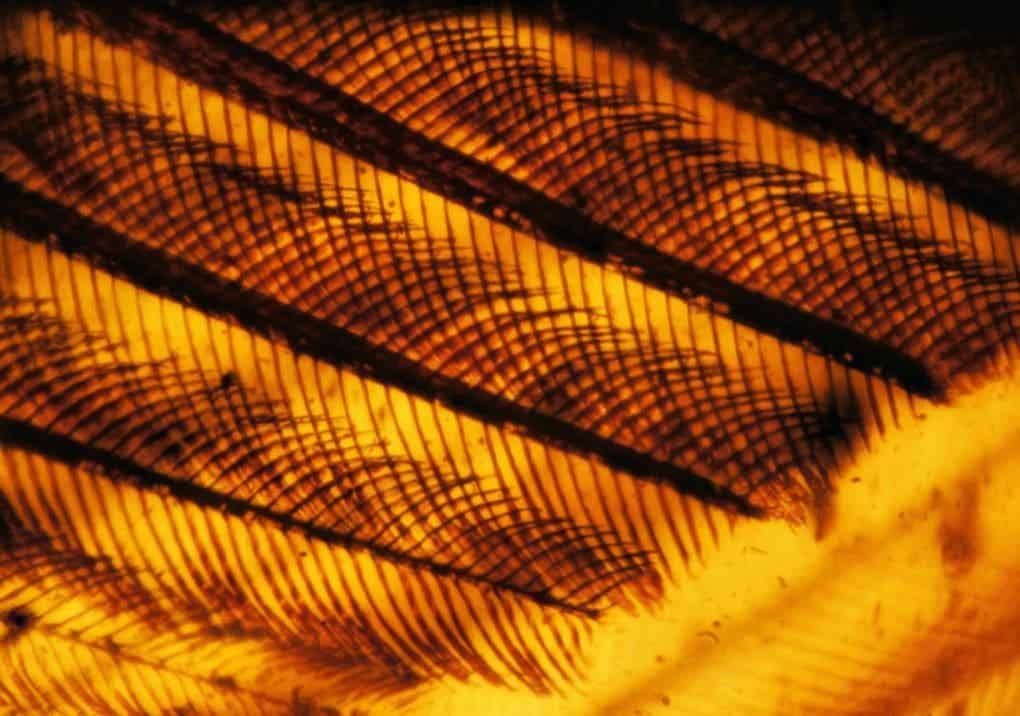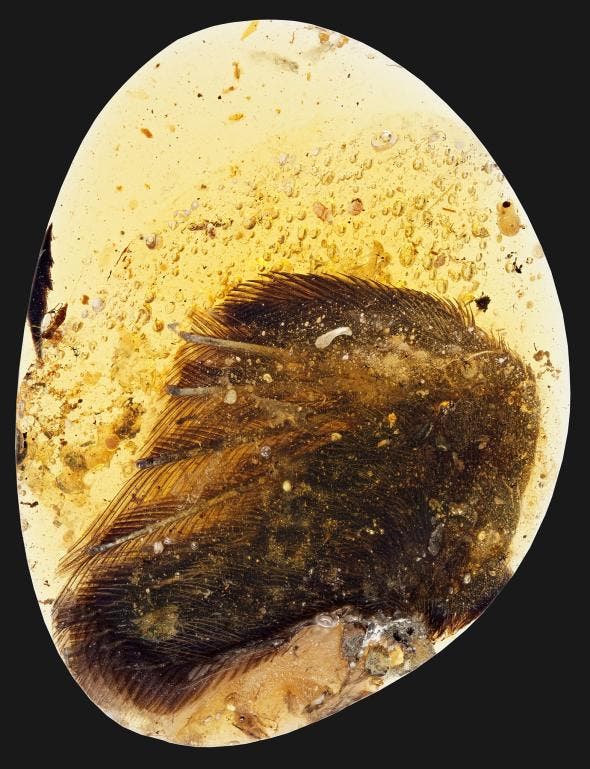Two stunning bird wings were found by paleontologists trapped in 100-million-year-old amber. The specimens discovered by the researchers are one of a kind and, unlike previous amber fossils, the feathers were attached to tissue, too.
The mid-Cretacious fossils were found in a Burmese amber deposit, where many ancient insects, plants and animals became trapped in resin, sealed against time for millions of years.
The mummified wings in question likely belonged to enantiornithes, avian dinosaurs which became extinct at the end of the Cretacious.
While it’s generally agreed that virtually all dinosaurs had feathers, scientists have to base their conclusions on findings that tell very little. The few dinosaurs that became fossilized feathers and all, like the famous Archaeopteryx, only provide a 2-D picture with no depth — besides they’re also rare.
The two dinosaur-era bird wings, however, come complete with bone, skin, muscle, tissue and tracts of feathers — all still intact.
“The biggest problem we face with feathers in amber is that we usually get small fragments or isolated feathers, and we’re never quite sure who produced [them],” says co-author Ryan McKellar, curator of invertebrate palaeontology at Canada’s Royal Saskatchewan Museum. “We don’t get something like this. It’s mind-blowingly cool.”
CT scans show the wings likely belonged to juveniles, judging from the bone size that suggests early development. Amazingly, feathers from 100 million years ago weren’t all that different from those sported by modern birds. The similarities include pigmentation, wing arrangement or microstructure.
The findings are even more amazing once you realize the 100-million-year-old bird wings could have been turned into trinkets. Burmese amber is famous for its many artifacts, which often get sold in flee markets like dime a dozen retail goods. Many locals illegally go into mines in search for amber fossils to make their living. The smaller of the two samples was initially destined to become part of a jewelry piece called “Angel’s Wings”, but luckily scientists procured it in time from a Myanmar amber market. The sample has been nicknamed “Angel” since. Who knows what inestimable treasures still lie around these markets.
“About 70 percent of the Burmese amber is barren, but the other 30 percent features phenomenal biodiversity,” said David Grimaldi, curator of invertebrate zoology at the American Museum of Natural History.. “Never, ever would I have predicted this level of diversity.”












